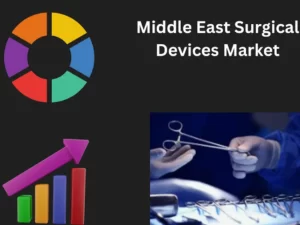© 2024 All rights reserved
Datavagyanik- Your Research Partner

The developments in the Middle East’s surgical device market include the emergence of new technologies, such as 3D printing and robotic-assisted surgery, and an increasing number of collaborations between governments, universities, and private companies to develop innovative healthcare solutions. Additionally, there is a growing demand for affordable, high-quality medical products, which is driving the market for specialty medical devices such as endoscopy, orthopaedic, cardiovascular, and urology devices. The increasing prevalence of chronic diseases and the rising demand for cost-effective treatments are also driving the market growth. Finally, the Middle East is rapidly becoming a hub for medical tourism, which is expected to further stimulate the growth of the surgical device market.

Furthermore, the recent developments in the Middle East surgical services market include the expansion of healthcare infrastructure, increased investment in healthcare technology, and the introduction of new regulations. The region has seen an increase in medical tourism due to its high-quality healthcare services, making it a popular destination for patients seeking surgical procedures. Additionally, the region has seen a surge in the number of private healthcare providers, which has led to an increase in the availability of specialty services. To improve patient safety and healthcare standards, the region is also introducing new regulations, such as mandatory health insurance for residents and stricter guidelines for medical staff. These developments are helping to strengthen the region’s surgical services market and make it an attractive option for those seeking advanced medical care.
In addition, technological advancements, such as the introduction of robotic systems in the region, are expected to boost market growth. In 2021, the increasing demand for minimally invasive surgeries is expected to further contribute to market growth. Additionally, the increase in the number of medical tourism activities in the region is expected to result in a growing number of surgeries. This is projected to drive market growth.
The exact import and export data of government data in the middle east surgical device space is not publicly available. However, according to the United Nations Comtrade database, the total imports and exports of medical and surgical instruments in the Middle East in 2019 were estimated to be around US$ 2 billion. The United States, Germany, and China were the major exporters to the Middle East, while Saudi Arabia, the UAE, and Turkey were the top importers.
A surgical device is any device that is used during a surgical procedure. These devices can be used to assist with the performance of a procedure or to provide support or access to a specific area. Surgical devices are tools and instruments used in surgical procedures to facilitate tissue manipulation, cut, suture, or staple tissue, and control bleeding.
Surgical devices are designed to be as precise, efficient, and safe as possible. They must be able to withstand the rigorous demands of the operating room and must be able to maintain their accuracy and reliability over long periods. To achieve this, many surgical devices are made from highly durable materials such as stainless steel, titanium, and other specialized alloys.
Modern surgical devices have become increasingly complex, with the introduction of robotic surgical systems and other advanced technologies. These devices are designed to help surgeons perform intricate and precise operations, while also reducing the risk of surgical errors. Many of these devices feature computerized controls, which enable doctors to perform highly accurate and precise movements with minimal effort. In addition, Surgical devices are instruments used by surgeons to perform procedures in various medical specialities such as Neurosurgery, Plastic & Reconstructive Surgery, Wound Closure, Obstetrics & Gynecology, Cardiovascular, and Orthopedic. These devices range from simple tools like scalpels and forceps to complex instruments like neurosurgical drills and cardiovascular stents.
Each speciality requires a specific set of surgical devices to perform procedures effectively and safely, and surgeons need to be knowledgeable about the devices used in their field. They are typically made of metal or plastic and come in a variety of sizes and shapes. They can be used to create a clear view of the surgical field or to hold a body cavity open for easier access.
The Surgical Devices market in Saudi Arabia is growing due to the country’s increasing healthcare expenditure and the government’s focus on improving healthcare infrastructure. The government has invested heavily in modernizing hospitals and medical centres, which has increased the demand for surgical devices. Additionally, the country’s population is growing rapidly, which has also contributed to the growth of the Surgical Devices market.
The UAE Surgical Devices market is growing due to the country’s strong economic growth and its focus on developing its healthcare sector. The government has invested heavily in modernizing hospitals and medical centres, which has increased the demand for surgical devices. Additionally, the country’s population is growing rapidly, which has also contributed to the growth of the Surgical Devices market. Furthermore, Dubai is becoming a hub for medical tourism, which is driving up demand for surgical devices in this region.
The middle east surgical devices market has been segmented into products and applications.
Based on the product type, the middle east surgical devices market is split up into Surgical Sutures & Staplers, Handheld Surgical Devices, and Electrosurgical Devices. In 2021, surgical sutures and staplers held a substantial revenue share. This can be related to the widespread use of sutures and staplers in wound closure techniques as well as their high adoption rate. The development of new staplers and sutures is also a major element influencing their market demand. Due to staplers’ benefits over sutures, the stapler segment is anticipated to increase at the fastest rate. Furthermore, the rising prevalence of chronic wounds and the growing geriatric population around the world are also expected to drive the demand for surgical sutures and staplers in the coming years. For instance, the use of sutures and staplers in the placental delivery of twins is rising due to the better outcomes it promises in comparison to forceps and vacuums.
Based on Applications, the market is classified as Neurosurgery Plastic & Reconstructive Surgery, Wound Closure, Obstetrics & Gynecology, Cardiovascular, Orthopedic and Others. In 2021, the segment with the highest revenue share in obstetrics & gynaecology. This was a result of the rising birth rate around the world. This was due to the sudden increase in conditions affecting the female reproductive system. This has led to an increase in the number of gynaecological surgeries. For example, cesarean section rates have risen from around 7% in 1990 to 21% today, and are projected to continue increasing over this current decade. According to the most recent data, 21.1% of women worldwide give birth by cesarean section.
By Device Type
By End Use
By Region
“Every Organization is different and so are their requirements”- Datavagyanik







© 2024 All rights reserved
Datavagyanik- Your Research Partner
Add the power of Impeccable research, become a DV client